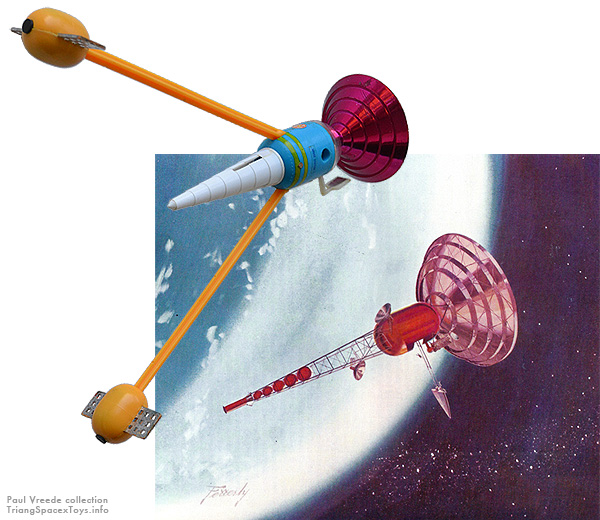
The Spacex Space Station, described as photonic-powered in an advert, is based on this Boeing concept painted by Robert Fetterly which Paul Woods discovered in The Encyclopedia of Space by Maurice Allward (advisory editor), published 1968. It illustrates a brief chapter on photonic powered rockets in the book, but it's definitely what the designers of the Spacex toy used for inspiration. As shown in the comparison below, a number of details of Fetterly's painting are very much present on the toy; explaining f ex why the little shuttle is sitting where it is.
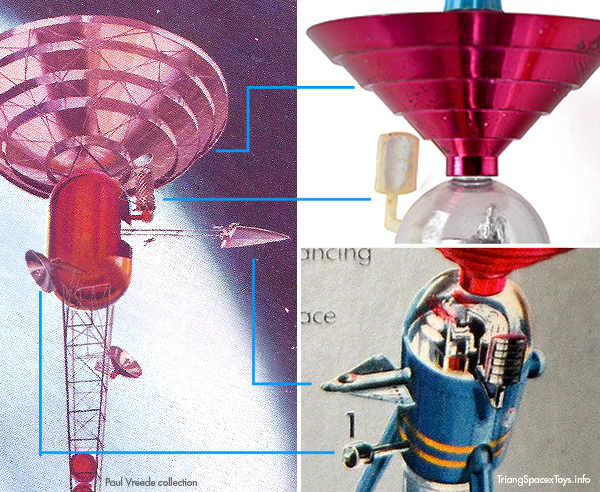
What Fetterly's painting doesn't have are the yellow antenna booms that keep the Spacex toy balanced on its base. These will initially have been added for purely functional reasons, but chances are that the solar panels on them were inspired by another Boeing concept illustration also present in The Encyclopedia of Space. As shown below, this depicts a more traditional-looking space station with four arms, each having a large module at the end fitted with a pair of panels.
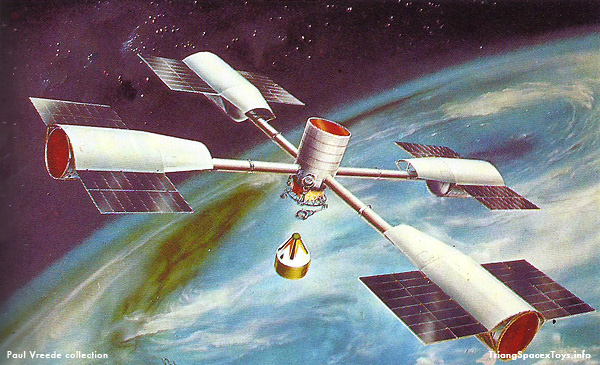
Photons are (I think imaginary) units of light. The Oxford Dictionary defines them as "A particle representing a quantum of light or other electromagnetic radiation. A photon carries energy proportional to the radiation frequency but has zero rest mass."
Next to nuclear power, photonic power was a revolutionary form of propulsion, featured in most books of the early 60s that describe the magnificent developments we could expect in the near and medium future.
The basic idea (1) had been described in 1957 by Eugen Sänger, and really caught the imagination because it might theoretically provide near-lightspeed travel. At the time this sounded like the most promising way of travelling to other stars, and so photonic spaceships found their way into many articles and books on future space exploration.
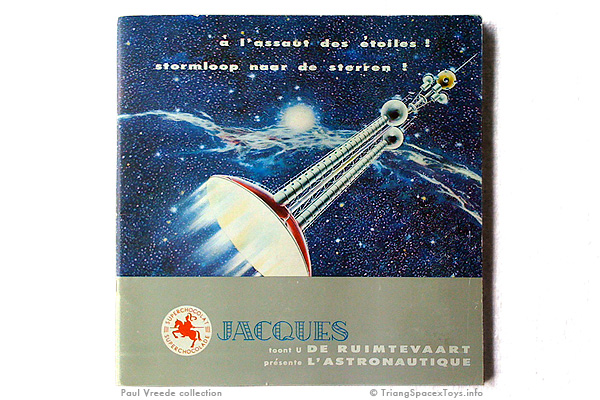
A photonic-powered spaceship illustrated (2) on the cover of a picture album by the Jacques chocolate company, Belgium ca. 1962-3. Images came free with various chocolate bars and assortments to be pasted into this album.
In the case of space stations, photonic power seems to have been an alternative, or rather a precursor, to large arrays of solar panels. Although the Spacex toy ended up with both a photonic dish and solar panels, an earlier example of a photonic station I found has only the dish. It's a design by Rocketdyne (best known for building the engines that powered the Saturn V and other rockets), included in the Space Stations book by Erik Bergaust, published 1962.
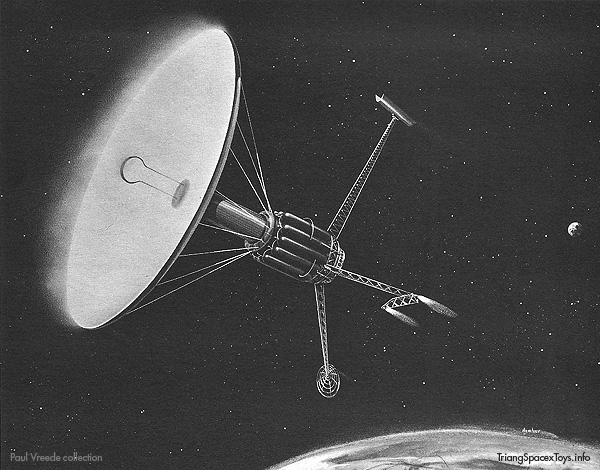
The caption with the Rocketdyne illustration explains: "Some of the early unmanned space stations will have huge solar mirrors to absorb radiation from the sun and thus generate heat to power equipment aboard. Solar power also can be used to develop rocket thrust in space if it should be desirable to move the space station from one orbit to another, or to turn it around and slow it down to bring it back to earth."
The word "early" has me somewhat puzzled though. As a means of generating power, that large dish would have been possible with the technology available at the time. As a means of propulsion however, photonic power had only very recently been introduced as a concept, so had a very long way to go before being possible (if at all).
Shuttle origin
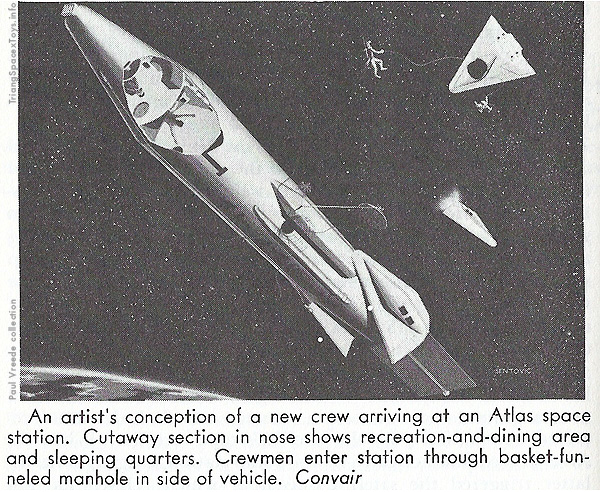
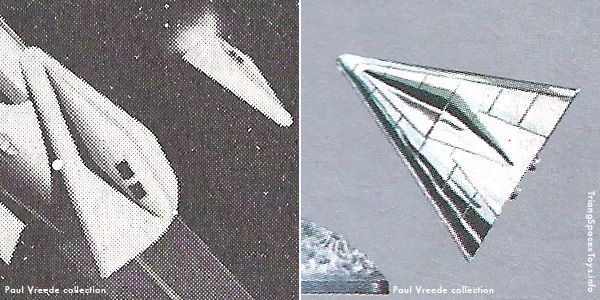
Although I'm missing the two large shuttles included with this space station, at least the box illustration shows them clearly enough to identify them. They are based on a pair of emergency craft shown in artists conceptions by John Sentovic of the Atlas Outpost space station designed by Krafft Ehricke at Convair in the late 1950s. A US Air Force project, the Outpost station was to be built around an Atlas missile body, and would later be known as the Manned Orbital Laboratory (though note this designation continued in use for other studies and similar projects). The emergency craft and other shuttles combine a delta shape with a distinctive lozenge-shaped cabin which are also present on the Spacex version. The only real difference are the twin tails added to the toy design. The images are from Guided Missiles: The Rockets and Satellites of Today and Tomorrow by Frank Ross Jr, published 1959. They had earlier been published in Aviation Week in April 1958.
Another possible source for these shuttles is a very nice model kit of the Atlas station produced by the Hawk model company in 1960, reissued as the Manned Orbital Laboratory in 1968. (3) The latter being close in time to when the Spacex toys were designed is to my mind the most probable inspiration for these shuttles.
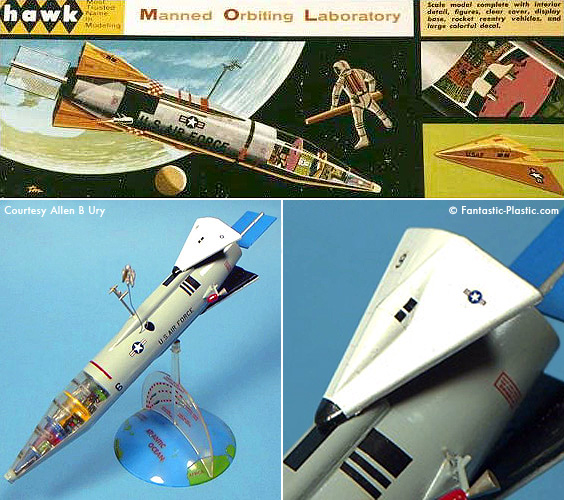
External links open in new windows
1: Colin Johnston has a nice piece about photonic spaceships on his excellent blog. The direct link to the spaceship illustration by David A. Hardy he mentions no longer works, because the latter's website is being changed. I've found it on another site, however. back to text
2: I later discovered that this spaceship appears to be copied from the Polish Młody Technik (Young Technician) magazine, with text in Russian translated via Google here. back to text
3: I'm again very grateful to Allen B Ury for letting me use his photos of another of his beautifully-built models. More on this kit can be found on his website, which contains a vast fleet of magnificent models covering decades of experimental aircraft and space projects. Recommended! back to text